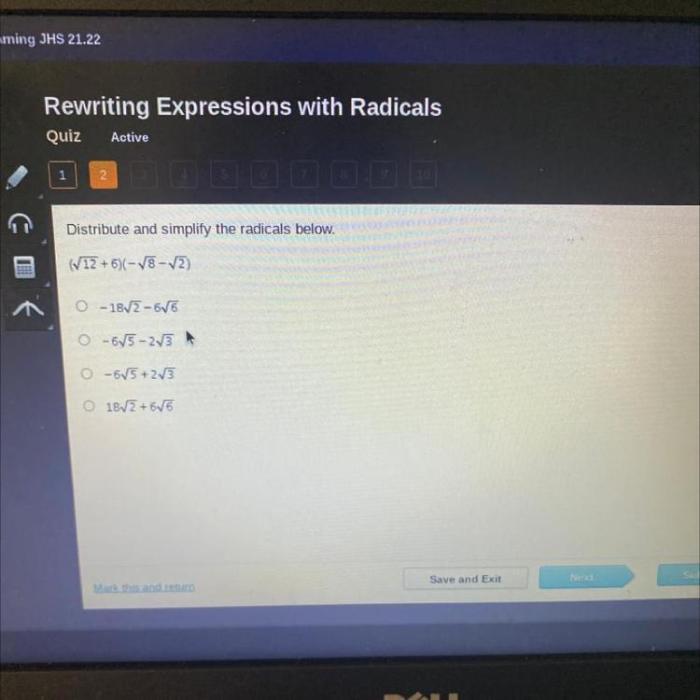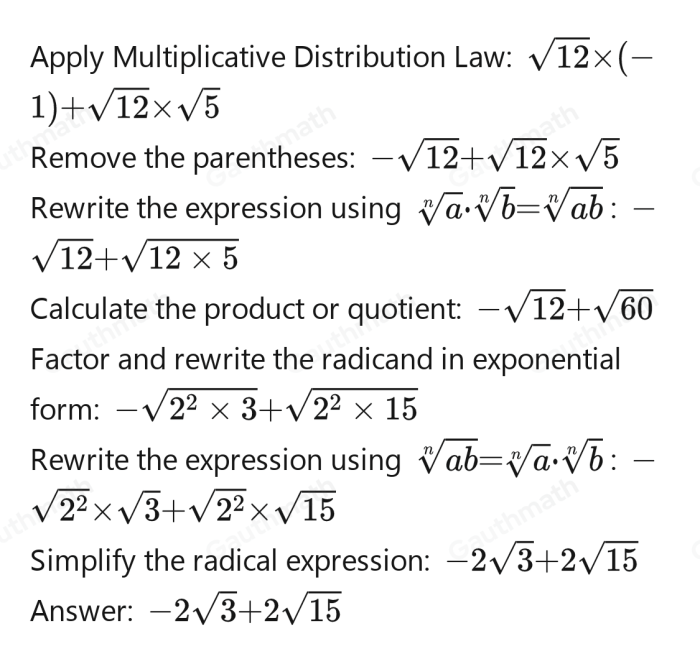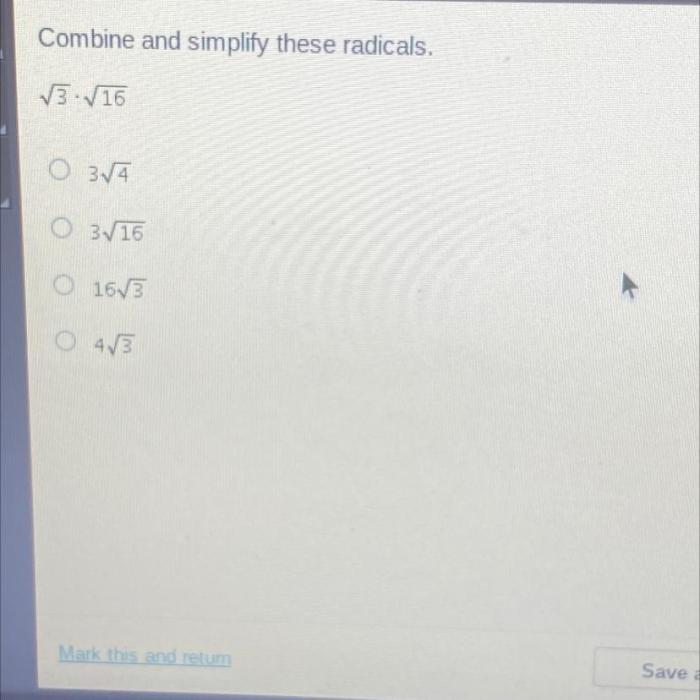Distribute and simplify these radicals – Delving into the realm of mathematics, we embark on an exploration of radical expressions and their transformation through the techniques of distribution and simplification. By distributing and simplifying radicals, we unlock their hidden potential and unveil their true nature, enabling us to solve complex problems and unravel the mysteries of the mathematical world.
Throughout this discourse, we will delve into the intricacies of radical distribution and simplification, uncovering the methods, applications, and advanced concepts that empower us to manipulate these expressions with precision and finesse.
1. Definition and Understanding of Distribution and Simplification of Radicals

Radicals are mathematical expressions that represent the principal nth root of a number. The distribution and simplification of radicals involve distributing and simplifying these expressions to obtain a more manageable form.
Distribution of radicals refers to the process of multiplying a radical expression by another radical expression or a monomial. Simplification of radicals involves transforming a radical expression into an equivalent expression with a simpler radical form.
For example, the expression √(12) can be distributed and simplified as follows:
√(12) = √(4 × 3) = 2√3
2. Techniques for Distributing and Simplifying Radicals

Distributing Radicals, Distribute and simplify these radicals
Radicals can be distributed using the following steps:
- Multiply the coefficients of the radical expressions.
- Multiply the radicands under the radical signs.
Simplifying Radicals
Radicals can be simplified using the following methods:
- Perfect Squares:If the radicand is a perfect square, simplify it by taking the square root of the number outside the radical sign.
- Factoring:If the radicand can be factored into a product of perfect squares, simplify it by taking the square root of each factor outside the radical sign.
- Conjugates:Multiplying a radical expression by its conjugate simplifies it by eliminating the radical from the denominator.
3. Applications of Radical Distribution and Simplification
Radical distribution and simplification have applications in various fields, including:
- Geometry:Calculating the lengths of sides and diagonals of geometric shapes, such as triangles and circles.
- Physics:Describing the motion of objects and calculating quantities like velocity and acceleration.
- Engineering:Designing structures and solving problems related to stress and strain.
4. Common Errors and Misconceptions

Common errors in distributing and simplifying radicals include:
- Forgetting to multiply the coefficients when distributing radicals.
- Not factoring the radicand completely before simplifying.
- Not simplifying the conjugate correctly.
Misconceptions include:
- Thinking that all radicals can be simplified to a perfect square.
- Believing that the radical sign can be removed by dividing the radicand by the index.
5. Advanced Concepts and Extensions: Distribute And Simplify These Radicals
Advanced concepts related to radical distribution and simplification include:
- Rationalizing Denominators:Removing radicals from denominators by multiplying and dividing by an appropriate conjugate.
- Complex Radicals:Radicals involving complex numbers.
- Nesting Radicals:Radicals within radicals.
Questions Often Asked
What is the purpose of distributing and simplifying radicals?
Distributing and simplifying radicals allows us to transform complex radical expressions into simpler forms, making them easier to understand, compare, and manipulate.
What are some common errors to avoid when distributing and simplifying radicals?
Common errors include forgetting to multiply the radicand by the coefficient when distributing, or incorrectly combining like radicals with different radicands.
How can I improve my understanding of radical distribution and simplification?
Practice regularly, review the concepts thoroughly, and seek guidance from teachers or tutors if needed.